Savory Jell-O Salad Aestheticism
why these popular mid-century monstrosities are relevant to fashion and beauty right now
Happy New Year’s Eve ✨
(Scroll down until you see Jell-O if you’d like to skip over this reflective and somewhat unrelated introduction).
I hope you’ve had a lovely holiday season and were lucky enough to enjoy some relaxing time off. I personally love entering a new year, although I certainly don’t ascribe to the stereotypical “new year, new me” bullshit. Even so, I like the feeling of a fresh slate, a new beginning, even if it’s really just another day. As we’re entering this year, I’ve been considering The Composite and what I’d like to accomplish here with you in 2025. More than anything, I’m so excited for this year and what it might look like. In 2024, I did a great job of maintaining, taking care of myself, chasing stability in various areas in my life (certainly something to be very proud of). And so, in a somewhat cliche manner, my goal for 2025 in general is expansion. I want to grow, push beyond the usual, somewhat rote scope of my days. Break out of my mold, so to speak (you’ll see what I mean momentarily).
In 2025, here’s what you can routinely expect from The Composite, beyond whatever else pops into my brain at indeterminate times and frequencies.
Continued weekly Digests: A highly curated list of books, bodies, and consumer culture news, distilled into an easily readable format.
Book reviews, perhaps in the form of monthly round ups or longer essay formats
A (new!) weekly send covering a top of mind topic: I’ll be honest - I’ve had many an idea stewing in my brain this year, ideas that eventually make it into a lengthy drafted post but never any further. I tend to overthink, overwrite, obsess, if you will. And with the nature of the internet and the things we talk about here, many of these topics are time-sensitive and their relevancy expires quickly.
To avoid the Draft Death of my ideas, I’ll write a more casual, conversational, shorter form version of the one thing I’m dying to talk to you about every week. It will, of course, be well researched and executed - just hopefully a little less contrived, and therefore actually making it to your inbox (and actually enjoyable).
To give you an idea of what this will be like, we’re starting right now. Below, you’ll find what’s top of mind for me right now. Before you dive into this very jiggly read, I’d love to know what you enjoyed about our time together this year, and if there’s anything you’d like to see in the coming year. I’d also just like to express my sincerest gratitude for being here, listening to my thoughts, and supporting me in one of the most fulfilling endeavors I’ve ever pursued. Thank you, love you, mean it.
Without further ado!
A Viscous Vintage Revival
The thing I can’t stop thinking about this week? Jell-o Salad and molded gelatin. I’m talking old school, 20th century, often gross and sometimes savory monstrosities of vintage dinner parties past - and marketing campaigns of the present. Brands have been leveraging this often off-putting but incredibly intriguing jiggly format throughout advertising and products as of late, putting it squarely in my radar. So what is it about gelatin that’s making a splash (splat?) right now?
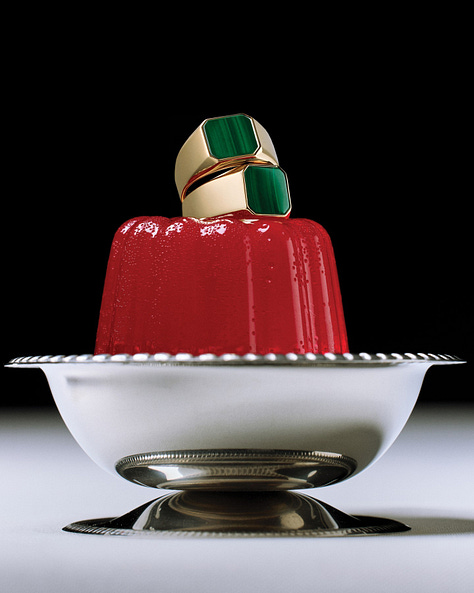
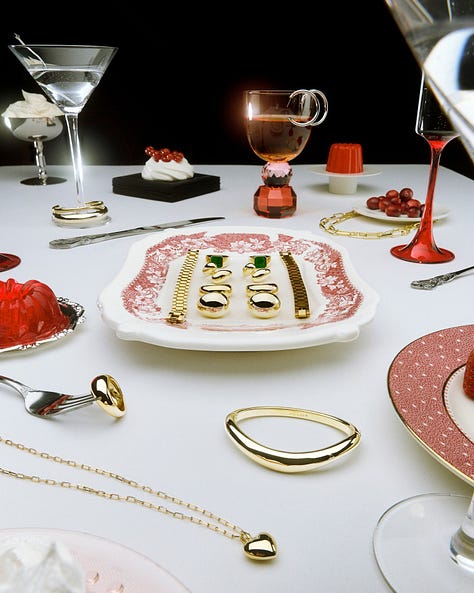

The post that triggered this fixation was from jewelry brand Ana Luisa, a brand I personally enjoy and wear daily. Their holiday campaign was dotted with slick, sculptural Jell-O dishes. It stirred other recent memories somewhere deep in my brain, so from here I started to dig through the internet looking for other gelatinous instances of late.
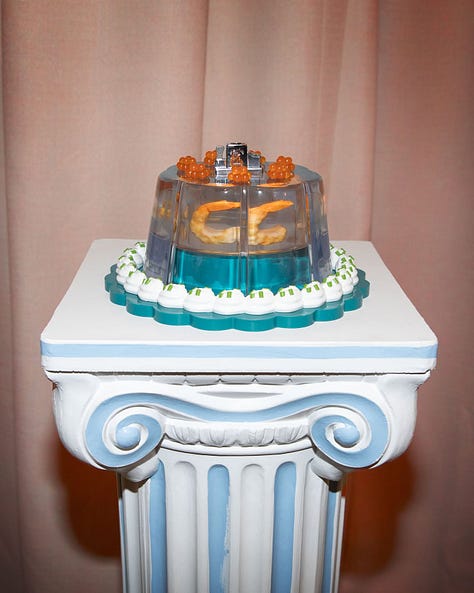
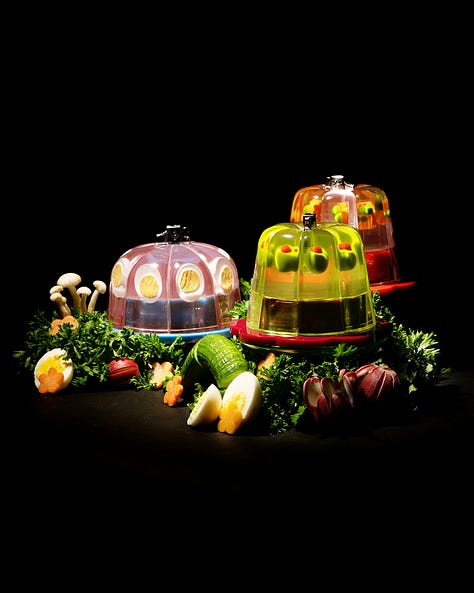
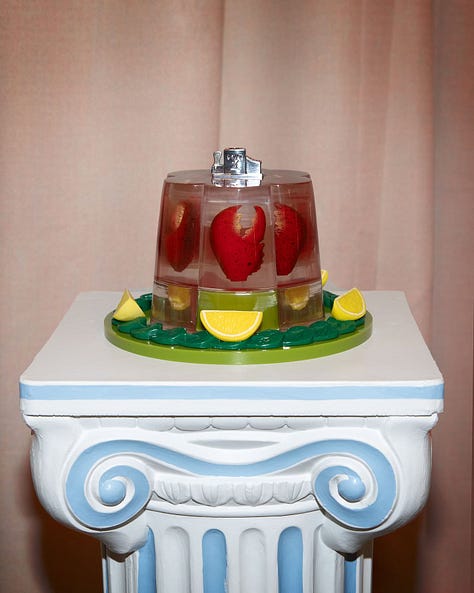
While Jell-O specifically hasn’t yet reached a point of saturation in marketing, we’ve recently seen an abundance of general food items merging with industries like fashion and beauty. As we exhaust some of the more pedestrian culinary items (butter, milk, bread etc), it seems like a natural progression to move into the high-sheen, high-drama of gelatin.
These molded foods have actually been around for hundreds of years, going in and out of fashion for various reasons. Throughout their existence, they’ve signaled modernity and a certain level of status and class. From medieval times to as recent as the 19th century, the process of rendering animal parts for gelatin was incredibly time consuming and only really undertaken by the staffs of the uber rich - royal families, plantation owners - anyone who didn’t actually have to do the dirty work themselves.
“We’re in one of those periods where it’s totally out of fashion,” Albala says. “That’s because it was democratized with the brand, but also because everything Jell-O stood for—progress, modernity, bright colors—stands in contrast to the idea of the natural, the sustainable, the artisanal.”1
This got me thinking on status signifiers of the modern age and the ways in which the rich broadcast their privilege through food, fashion and beyond. From there it was an easy jump to the concepts of thinness, wellness, and abstaining from “guilty pleasures” as some sort of show of false morality and restraint as superiority. As Elizabeth Goodspeed famously said in this article (not sure if it’s famous to anyone but me, but I’ve read it an alarming number of times), we’re desiring food instead of eating it. I’m sure that in the 1960s, people were actually eating these aspic atrocities - but in 2024, is anyone really consuming this elaborate table decor, even if it’s edible? As we foray further and further into the current Ozempic-fueled appetite crisis, food will increasingly serve aesthetic purposes rather than actual consumption. With many families in America unable to afford even basic groceries, the use of food purely for aestheticism is the ultimate status signal - except for, maybe, thinness2.

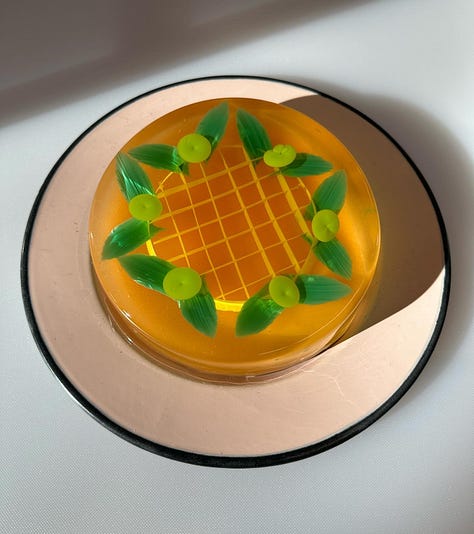
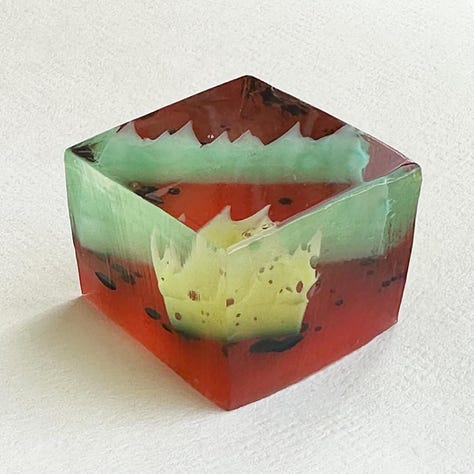
This is the point at which I tell myself to keep it simple and not lose the plot. So, a few more quick thoughts:
Other pop culture happenings that signal a continued rise for our gelatin encased friends:
Proliferation of savory ingredients in places that they haven’t previously belonged (See: savory cocktails like the Caesar Salad martini at ShyShy and “Chaos Cuisine”3)
Current exponential popularity of iconic aspic ingredients like olives, mayonnaise, and shrimp
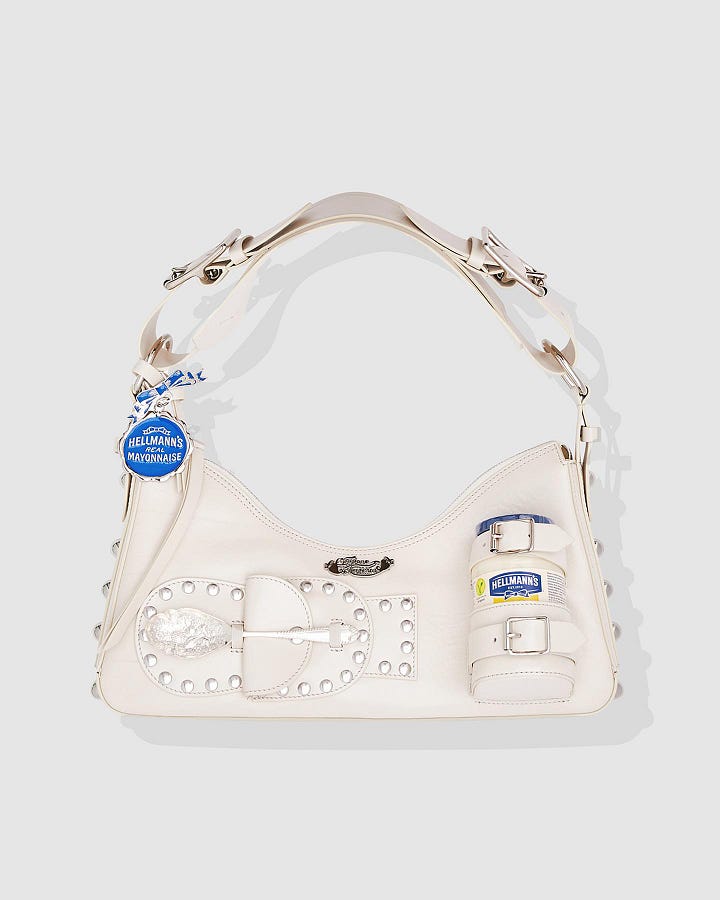
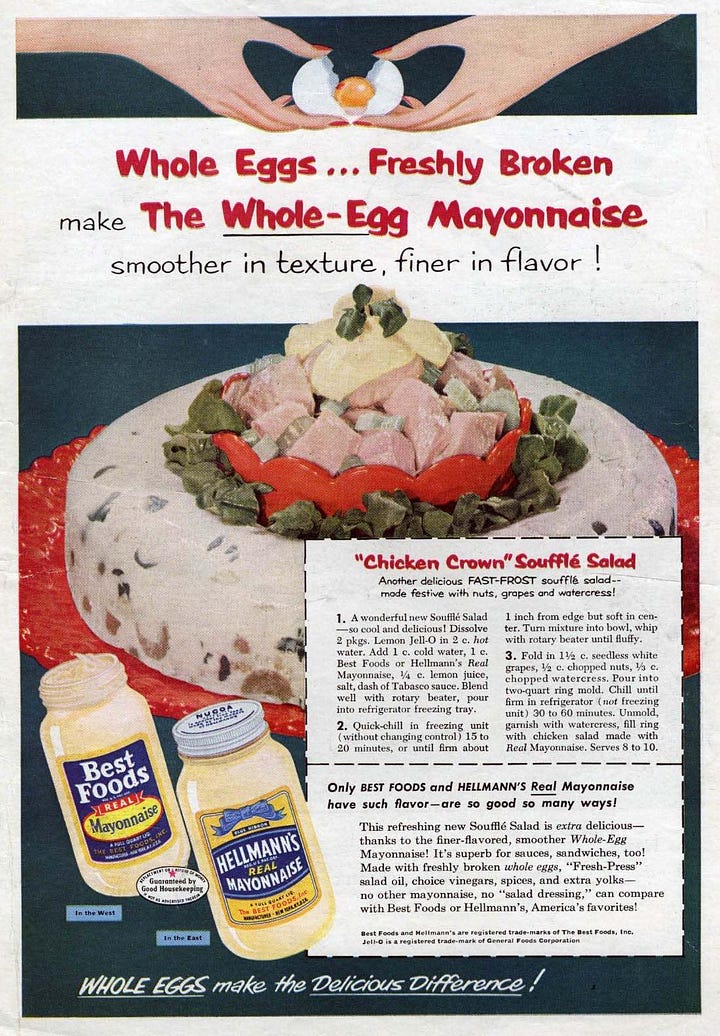

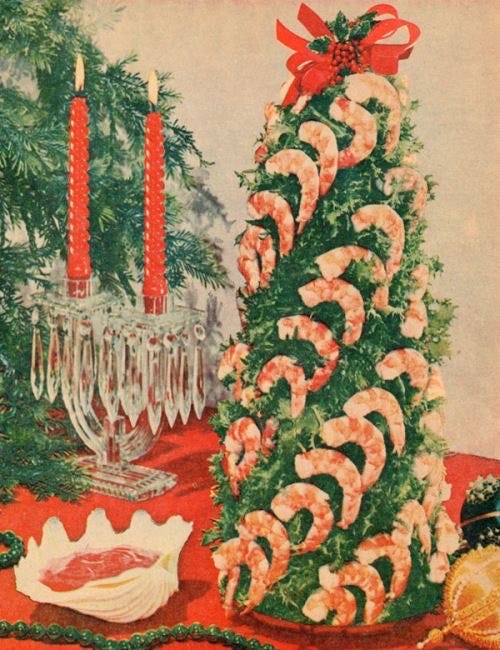
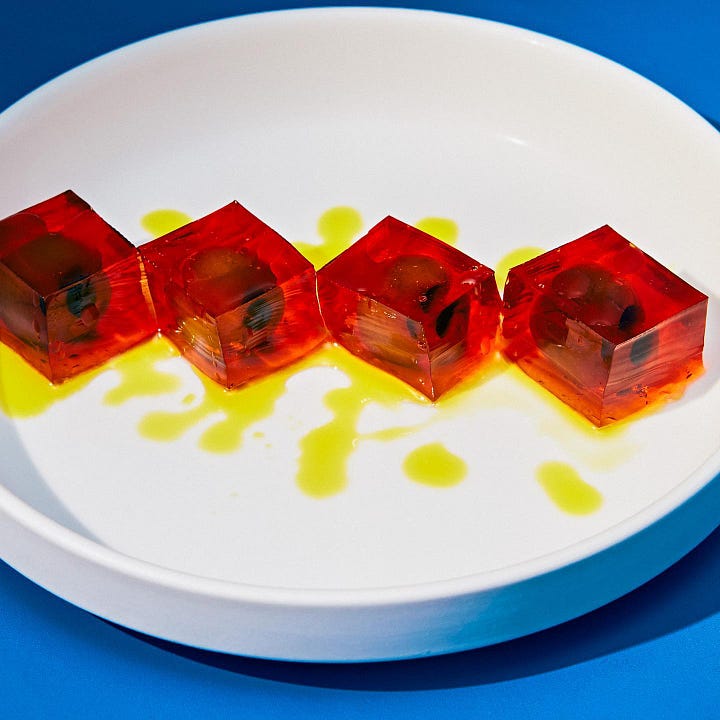
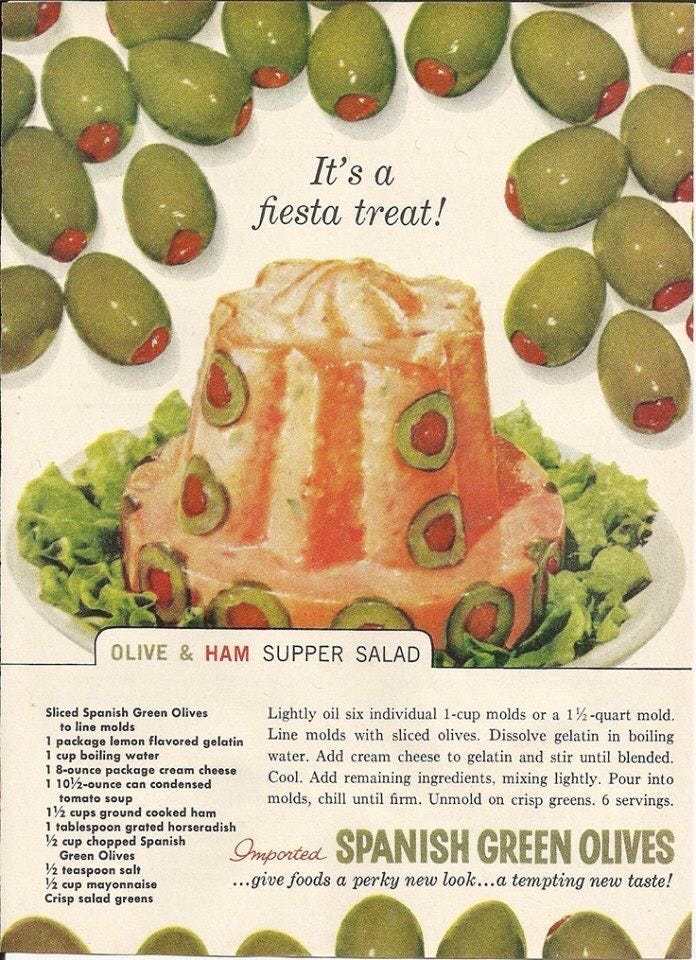
Coincidentally, I’ve just realized I made both a savory tree and Jell-O shots for my own recent holiday party
The rise of tradwife-ish influencers. On the contrary origins of the elaborate aspic during the industrialization + streamlining of American foods:
“But there was a contradiction here, one that required resolution. Instant products were here to stay: They were handy, they were cheap, and they were fast. Housewives were meant to be, and needed to be, economical and efficient. But feeding her family was a woman's duty, and that meant putting love and care into meals. Plopping some plain canned soup or a few squares of Jell-O into a bowl just didn't feel like real cooking. To get out of this dilemma, women actually added labor back into the process” 4
A la Nara Smith making chewing gum from scratch.
On a related note: The mainstreamification of Mormon food culture. Mormonism was abundant in pop culture this year, and perhaps nothing is more indicative of that than the rise of dirty soda. In America, sweet Jell-O generally is most popular in the Midwest and Deep South. Savory Jell-O salads, however, are still relevant in a few areas of the country- those that are heavily populated by Mormons.
How is this all relevant to general trends in fashion, beauty, and consumer culture?
2024 was the year of milk for beauty - is 2025 the year of gelatin? This year we saw, ironically, Milk Makeup’s Jelly Tint blush break the internet. While jelly beauty products are not unheard of, perhaps we’ll see more of these blatantly gelatinous products as the worlds of food and beauty become more intertwined than ever (and, possibly, more lawless than ever). I’m honestly shocked we haven’t seen a Rhode product suspended in gelatin yet, although we’ve gotten very close. Would be exceptionally cute for a Valentine’s Day spread - call me, Rhode.
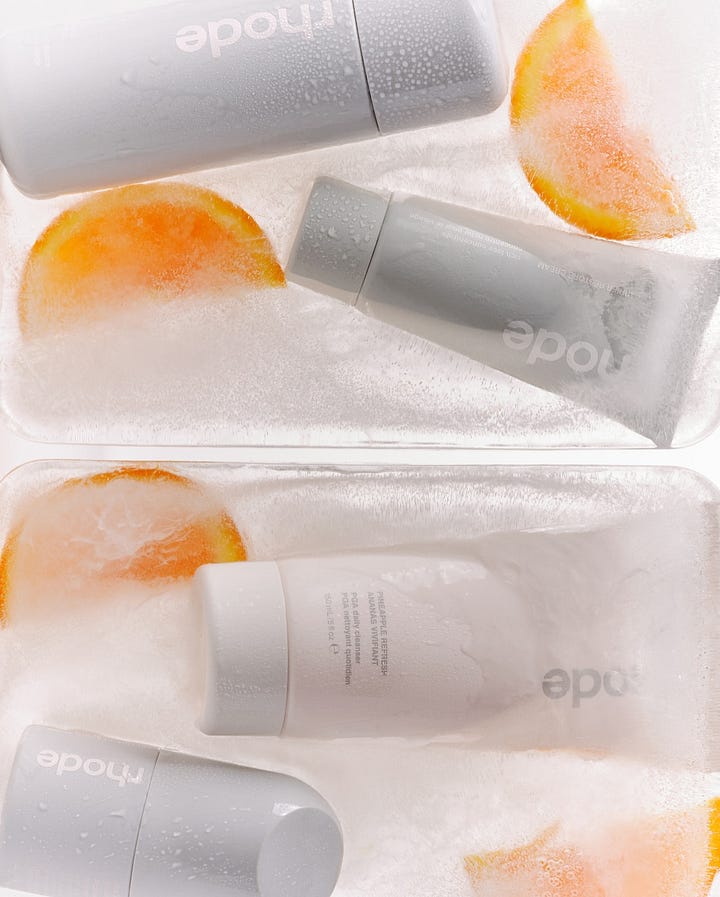
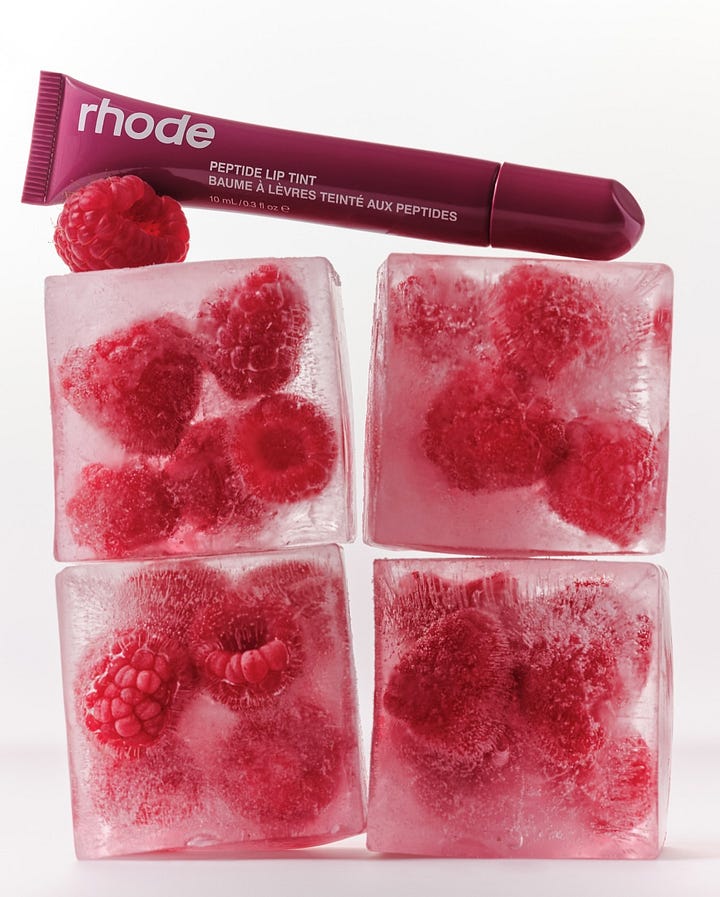
Beyond just the jelly aspects, a hallmark of the Jell-O salad is the unexpected savory ingredients turning the dessert into something more.. ominous. In a year dominated by edibly sweet, gourmand fragrances, will we see an uptick in unexpected, somewhat unwelcome savory ingredients in perfumes next year? We’ve already seen vegetal notes like basil or tomato, but maybe we’ll go full throttle into a meat scent (does seem very “Alpha Male” adjacent and appropriate for all the young incels). See “Trad Masc” section of this very good article here for further substantiation.
We’re also seeing a pattern of 60s trends across fashion and beauty, a decade rife with wiggly wonders. Politically, the 60s are known as one of the most divisive decades, described as an era of instability. With televisions now present in most living rooms, the violence and injustices of the world were more visible than ever. Sounds familiar, no? No wonder people need(ed) a wiggly dessert. Fast forward, and the flippy bob is one of the hottest hair trends of 2024, evoking the retro-futurism of the 1960s from designers like Pierre Cardin and Courreges. Speaking of the latter, several designers wove a distinctly mod thread through their 2025 collections, a natural progression of the recent “ladylike” dressing trend.
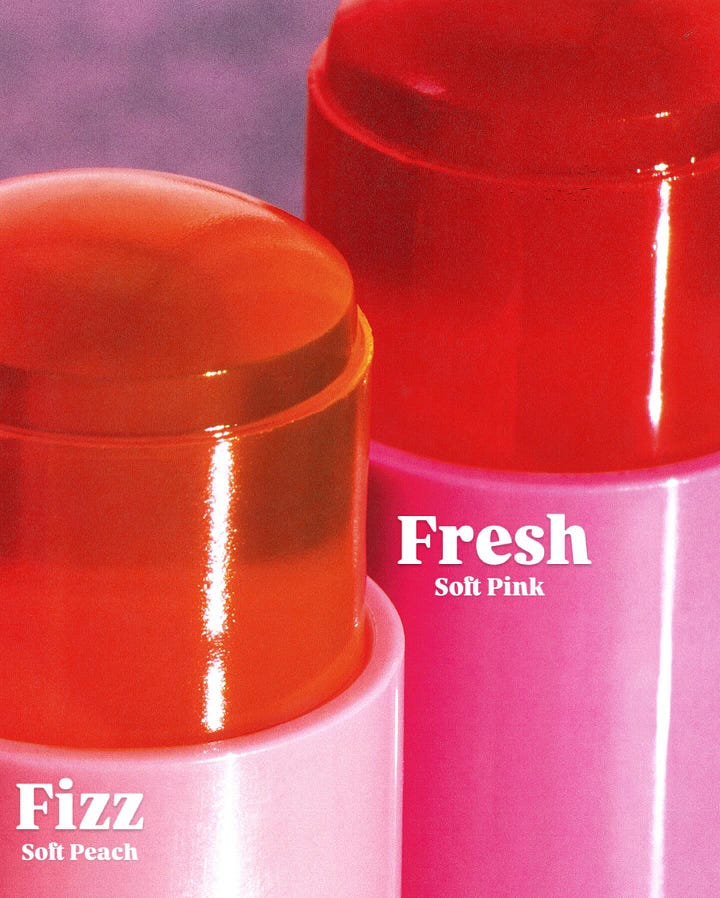
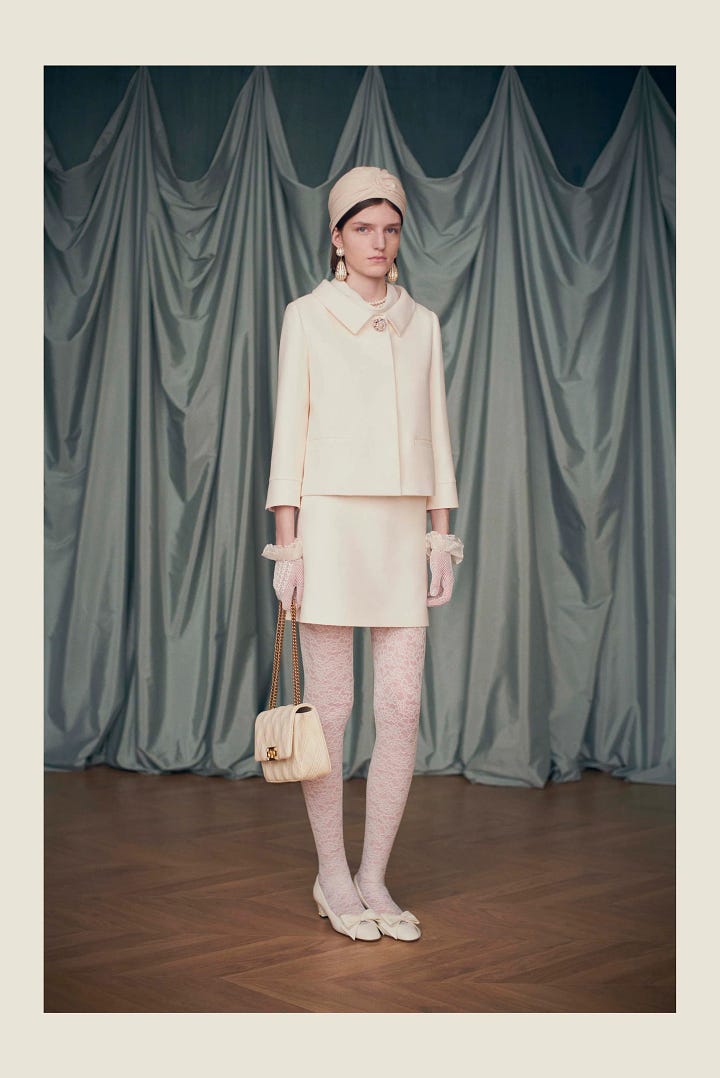
Okay, I’m cutting myself off here. It wasn’t short, but it is out of my drafts and I hope you enjoyed. BYE!
What’s top of mind for you this week? Let’s discuss ⬇️
https://www.atlasobscura.com/articles/aspics-jello-salad
especially when achieved through pricy pharmaceuticals
This article also cites that this method of cooking aims to reduce food waste, which is another reason that aspics became popular. Leftovers lasted longer when suspended in gelatin
https://www.seriouseats.com/history-of-jell-o-salad




